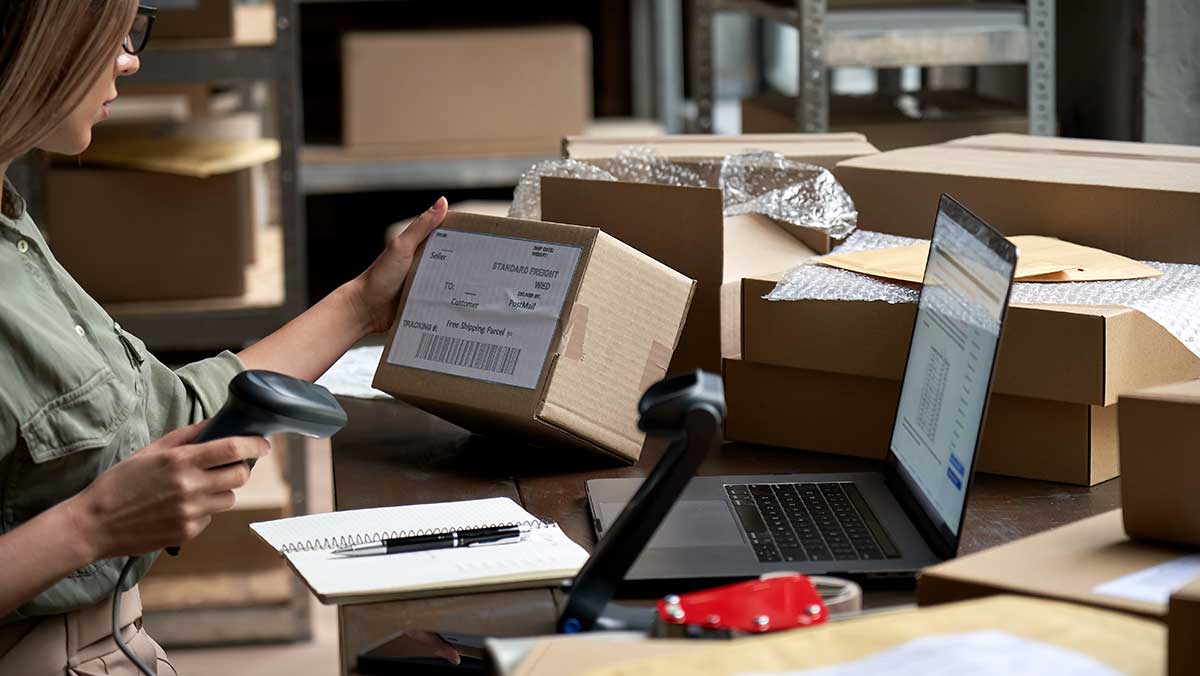Over the last 20 years, Amazon set the standard for getting products to their end customers quickly. But unless you’re a third-party (3P) seller, you don’t have the luxury of shipping from more than 1,000 nearby distribution and fulfillment centers. That means for the vast majority of ecommerce businesses, including over 1.75 million Shopify merchants and 18 million eBay and 5 million Etsy sellers, timely and reliable deliveries are a customer service must. To ensure your packages arrive on schedule and undamaged, use this guide to shipping labels for ecommerce businesses.
What is a Shipping Label?
Applied to an individual package or a pallet that includes multiple boxes, a shipping label contains the destination address and postal code, country, tracking number, weight, return address, shipping method, and more, which are essential to route a package to its end destination.
Shipping Label Required Information
Regardless of the shipper, the information required on a shipping label is the same. Here is the data that’s necessary to include:
Recipient Information
The recipient's name and/or company name, complete address, and postal code are all essential for routing a package to its proper destination. The recipient's name is especially important for ensuring that the package is routed to the right person, particularly when shipping to a multi-tenant building or an organization with many employees.
Sender Information
Two to 5% of packages are returned to the sender. That’s why a shipping label with sender information that includes the name and full address of the person or company shipping the package is so important. In fact, missing sender information is the most common reason an undeliverable package isn’t returned.
Tracking Number
Tracking numbers allow you and the end customer to track the shipment. UPS, FedEx, the USPS, Shopify, Etsy, eBay and more generate the tracking number in their shipping label apps.
Weight
The package weight helps a carrier determine how to handle the package properly. For example, a heavy package may require special equipment to unload and deliver to the recipient. In addition, the package weight is a major factor in determining the cost of your shipment.
International Shipments
In addition to these shipping label fields, when sending packages internationally, there are other requirements.
Harmonized System (HS) Codes
HS codes are internationally standardized codes used to classify products for customs purposes. They allow customs officials to identify the type of goods being shipped and determine if any restrictions or regulations apply.
Customs Information
Customs information which may include the contents of the package, the value of the content, the country where the goods originate from and any applicable warranties or certifications.
Special Handling Instructions
Some packages require extra attention to meet a unique need of the shipment. Special handling instructions help guide the shipper to help ensure a package arrives at its end destination without damage.
Fragile Labels
Applying fragile labels ensures shippers handle delicate packages properly.
Arrow Labels
As the name implies, arrow labels guide the correct orientation of products during transit, which are often required for electronic items and hazardous materials shipments.
DOT Labels
The Department of Transportation (DOT) requires the proper identification and classification of hazardous materials during shipments. If a package is capable of posing an unreasonable risk to health, safety, and property when transported, it’s necessary to add a DOT label.
Keep Refrigerated or Frozen Labels
From food products to medications, vaccines and other perishable items, maintaining specific temperature ranges are crucial to keeping the contents fresh. Applying a label with instructions to refrigerate or freeze on arrival guides proper handling once the package is delivered. In addition, when the contents of a shipment need to stay within specific temperature ranges, temperature-indicating labels, like ColdMark, indicate if those ranges have been maintained.
Custom Shipping Labels
Packages often serve as another way to make your brand stand out. Custom shipping labels are one way to do that. Adding a logo, colors and designs that complement the brand image, not only accentuate the brand but also contain the necessary information fields that allow your shipment to go from point A to point B. The UAL Custom Label Designer is one tool you can use to design, price and order custom shipping labels.
Linerless Shipping Labels
Using linerless materials is an environmentally friendly, cost-effective shipping label option. A linerless material functions in the exact same way as a standard label, but as the name implies, doesn’t contain a liner. Instead, a special release coating allows linerless labels to be wound over each other without sticking. You can learn more about the benefits of linerless labels here.
Shipping Labels at United Ad Label
Regardless of how many packages you ship each day, United Ad Label stocks dozens of different shipping labels that meet the needs of companies large and small. And if you need a custom product, our Custom Label Designer makes it easy to design, price and order the exact label you need online. Contact us for more information.
